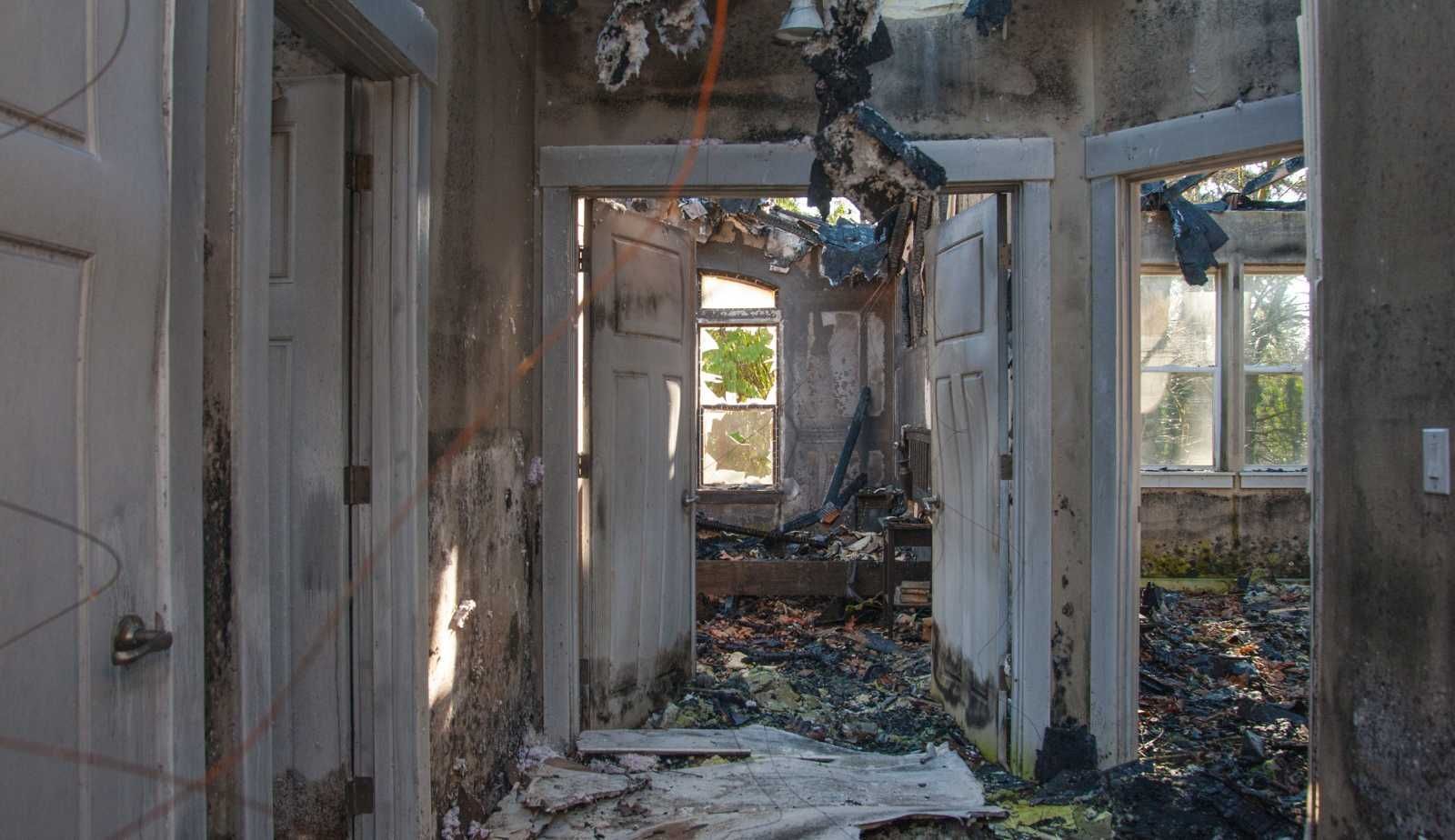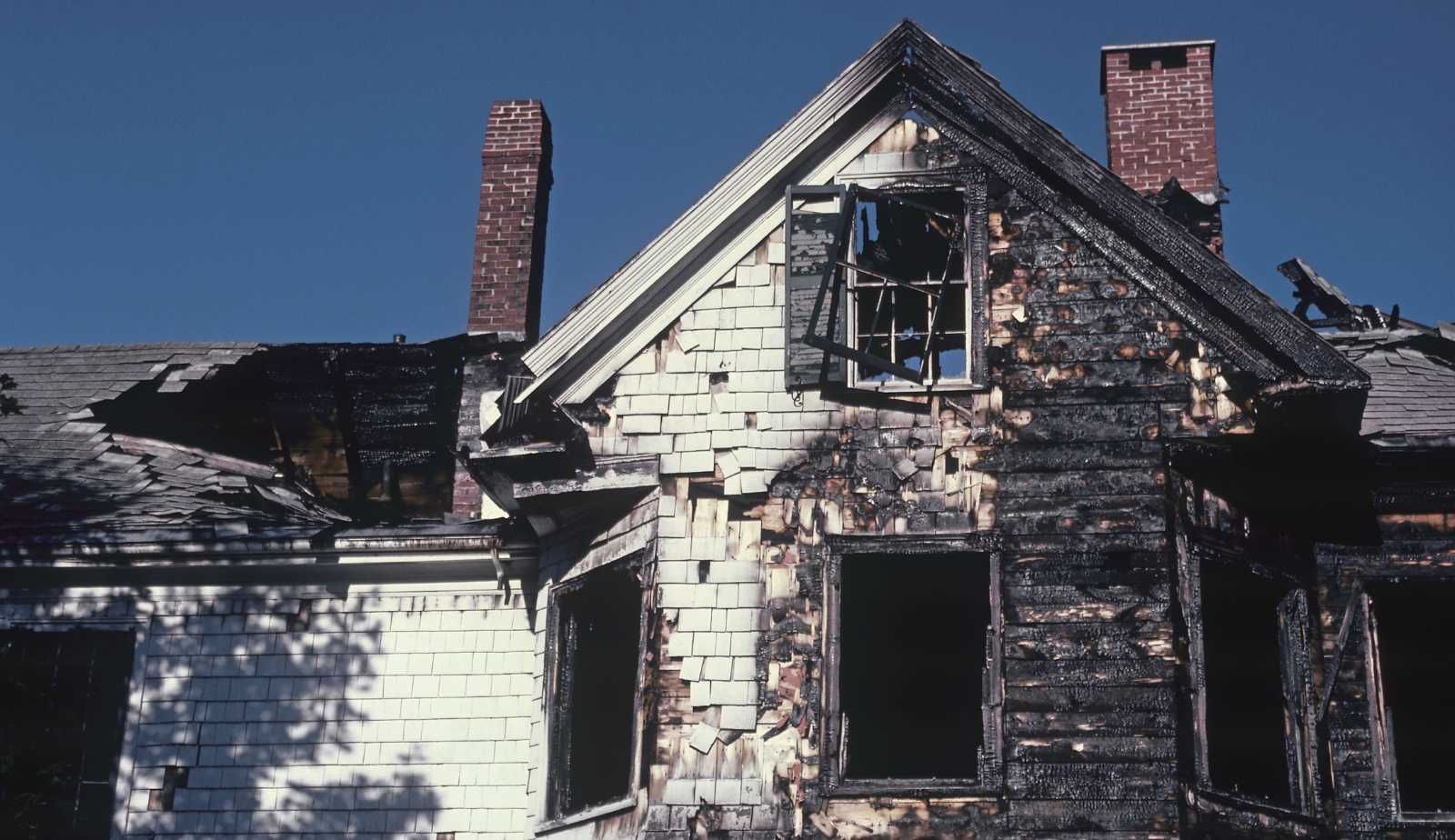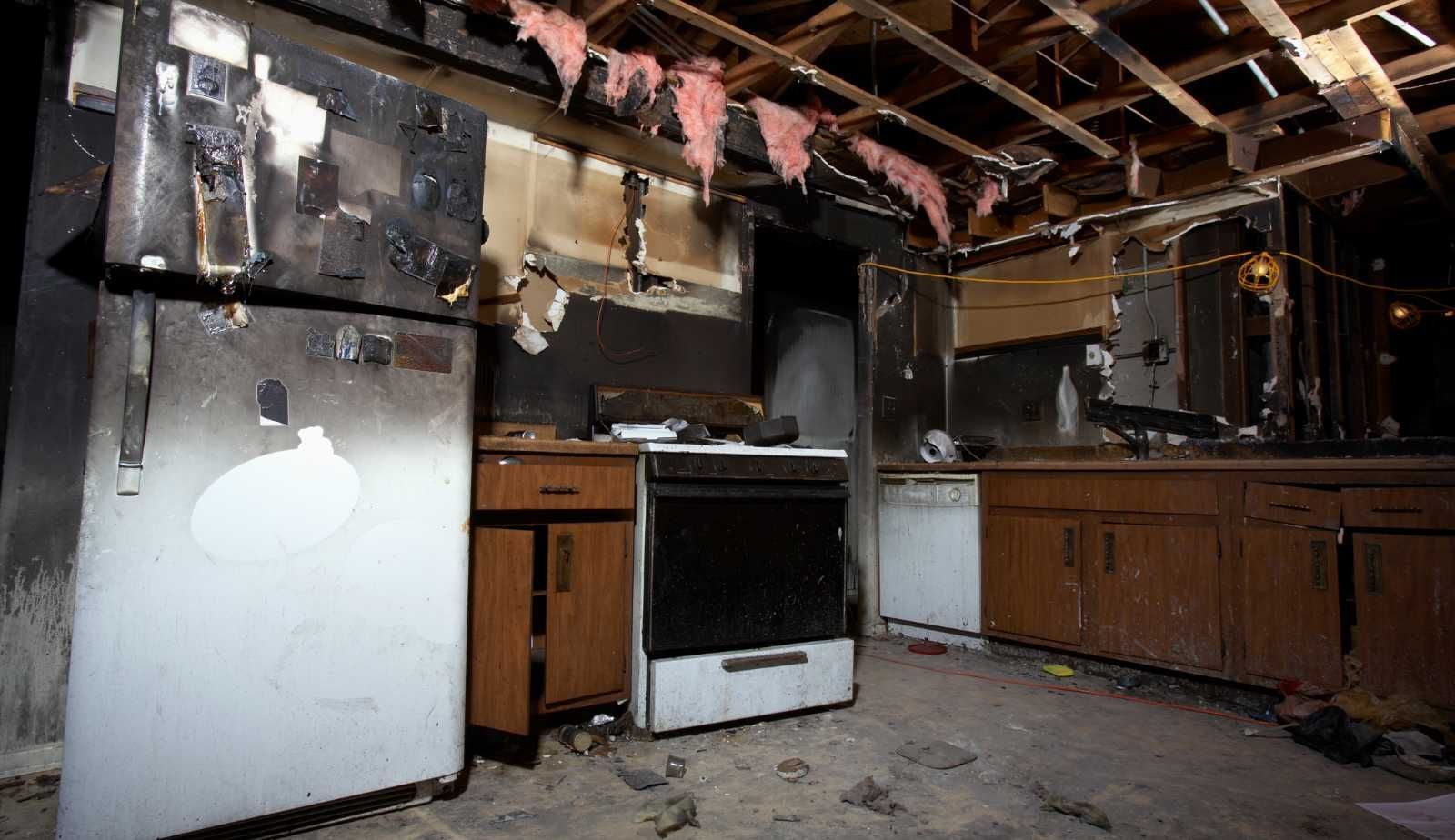Essential Steps After a Fire: Safeguarding Your Home and Starting the Recovery Process
The article discusses the crucial steps homeowners should take in the first 24 hours after a fire to secure their property and begin the recovery process.

Importance of Immediate Action Post-Fire
In the immediate aftermath of a fire, homeowners are faced with a critical window of opportunity within the first 24 hours to take essential steps that can significantly impact the mitigation of damage and the initiation of the recovery process. Acting promptly is paramount as it not only helps prevent secondary issues but also ensures the safety of occupants and the preservation of valuable possessions. For instance, imagine a scenario where a fire has ravaged a home, leaving behind structural damage and smoke residue. By promptly addressing the aftermath of the fire, homeowners can lay the groundwork for a more efficient and effective restoration process, ultimately aiding in the return to normalcy.
The first 24 hours post-fire are crucial for homeowners to swiftly respond to mitigate damage and commence the restoration journey. By recognizing the urgency of the situation and promptly enacting essential steps, individuals can not only limit the impact of the fire but also set the stage for a more efficient and effective restoration process, ultimately aiding in the return to normalcy. This immediate action is vital in containing the damage and minimizing the risks associated with post-fire hazards.
Contact Emergency Services
Contacting emergency services immediately after a fire is crucial for several reasons. Firefighters play a key role in assessing the safety of the property, extinguishing any remaining hotspots, and evaluating the structural integrity post-fire. Their professional assessment can identify hidden dangers and potential risks, guiding homeowners on the necessary steps to secure the property and ensure a safe environment for all inhabitants. Additionally, emergency services provide initial support by not only evaluating the immediate impact of the fire but also by offering assistance and resources for homeowners to navigate the challenging aftermath.
In the event of a fire incident, contacting emergency services promptly is essential for ensuring the safety of individuals and protecting the property from further damage. Firefighters are trained to assess the structural integrity of a building post-fire, identify any potential hazards or risks, and take necessary actions to prevent further damage. For instance, in cases where a fire has compromised the stability of a structure, firefighters can secure the area to prevent collapses or additional harm, illustrating the critical role they play in post-fire safety and assessment. By promptly reaching out to emergency services, homeowners can access immediate assistance and guidance in dealing with the aftermath of a fire.
Document Damage for Insurance Purposes
When it comes to documenting damage after a fire, precision is key to ensuring a successful insurance claim. Homeowners should meticulously record structural damage, personal belongings, and any temporary repairs made to prevent further harm. Providing a comprehensive inventory of damaged items with photographs can streamline the insurance claim process and aid in accurately assessing the extent of the damage. Proper documentation is essential for supporting the valuation of losses and expediting the claims process.
Detailed documentation of the damage incurred is crucial for insurance purposes. Homeowners should not only list the items that have been damaged but also provide evidence such as photographs and videos to substantiate their claims. This documentation is vital for accurately assessing the extent of the damage and ensuring that all losses are accounted for in the insurance claim. For example, if a fire has destroyed valuable artwork or electronic devices, documenting the condition of these items before and after the fire can strengthen the insurance claim, facilitating a smoother and more efficient claims resolution process.

Secure the Property Immediately
When it comes to securing the property immediately after a fire, homeowners must act swiftly to mitigate any further damage that could exacerbate the situation. Boarding up windows and doors is a critical step to safeguard the property from external elements and potential intruders, ensuring that the premises are protected from additional harm. By promptly securing the property, homeowners not only defend against external threats but also maintain the privacy and safety of the residents during the recovery process. Additionally, temporary repairs such as covering roof openings and sealing damaged areas can help fortify the property and reduce the risk of additional deterioration, laying a strong foundation for the restoration efforts that will follow.
Consider a scenario where a fire has compromised the structural integrity of a home, leaving it vulnerable to external elements like rain or vandalism. By promptly boarding up windows and doors, homeowners create a barrier that shields the property from adverse weather conditions and unauthorized access, thereby preventing further harm. Temporary repairs such as covering roof openings and sealing damaged areas can help prevent further damage and secure the property until more extensive restoration work can be undertaken. These immediate actions are crucial in protecting the property and its contents from additional harm in the critical hours following a fire.
Contact a Louisiana Certified Fire Damage Restoration Company
When facing the aftermath of a fire, contacting a certified fire damage restoration company is a pivotal step towards property recovery. These specialized professionals bring a wealth of experience and skills to the table, enabling them to address fire damage comprehensively. Certified restoration companies follow industry standards and best practices, ensuring that the restoration process is carried out efficiently and effectively. Early involvement of restoration experts can expedite the process and minimize long-term damage to the property.
In the wake of a fire, engaging with a certified fire damage restoration company is essential for efficient and effective property recovery. These professionals possess the expertise and equipment to handle fire damage effectively, ensuring a thorough cleanup and restoration process. By entrusting the restoration to certified experts, homeowners can rest assured that their property is in good hands, facilitating a smoother and more successful recovery process. Additionally, certified restoration companies utilize specialized techniques for water extraction, soot removal, and property securing, all of which are crucial in preventing secondary damage post-fire. This early involvement of restoration experts not only accelerates the restoration timeline but also minimizes the overall damage sustained, ultimately facilitating a smoother transition back to normalcy for homeowners.

Understand the Insurance Claims Process
Understanding the intricacies of the insurance claims process after a fire incident is a critical step for homeowners. It is imperative to thoroughly review the insurance policy to grasp the extent of coverage and the procedures necessary to file a claim successfully. Submitting a detailed inventory of damaged items and accurate estimates of repair costs is essential for a successful claim. Promptly reporting the fire incident to the insurance company can expedite the claims processing and approval. By familiarizing yourself with the insurance policy coverage and specific requirements for filing a fire damage claim, you can ensure a smoother process and quicker approval for necessary repairs.
Navigating the insurance claims process can be complex and overwhelming. Homeowners should take the time to review their insurance policy carefully to understand the coverage for fire damage and the procedures for filing a claim. It is essential to submit a detailed inventory of damaged items, along with accurate estimates of repair costs, to support the claim. Promptly reporting the fire incident to the insurance company is crucial for expediting the claims processing and approval. By staying informed about the insurance policy requirements and diligently documenting the damage, homeowners can ensure a smoother and more efficient claims resolution process.
Seek Emotional Support for Recovery
Recovering from a house fire involves more than just physical restoration; it also entails addressing the emotional toll it can take on individuals and families. Support groups, counseling services, and community resources can provide emotional assistance during the recovery process. Coping with the emotional impact of a fire is crucial for the well-being of homeowners and their families. Emotional recovery is a significant aspect of post-fire restoration, promoting resilience and a sense of normalcy.
Seeking emotional support is crucial for navigating the challenging feelings and processing the trauma associated with the event. Support groups, counseling services, and community resources can offer a safe space for individuals to share their experiences, receive emotional assistance, and learn coping strategies. Emotional recovery is a vital component of the post-fire restoration process, as it helps individuals rebuild their emotional resilience and find a sense of normalcy amidst the upheaval caused by the fire. By engaging with emotional support services, homeowners can address the psychological impact of the fire and work towards healing and recovery.

Importance of Early Restoration Efforts
In the critical aftermath of a fire, the importance of early restoration efforts cannot be overstated. Immediate restoration actions like water extraction and soot removal can prevent further damage to the property. Professional restoration companies use specialized techniques to salvage belongings and restore the property efficiently. Early restoration efforts reduce the risk of mold growth and structural deterioration post-fire. By taking swift restoration actions, homeowners can significantly limit the extent of damage and facilitate a smoother restoration journey.
Swift restoration efforts are crucial in limiting further damage to the property post-fire. By engaging professional restoration companies early on, homeowners can benefit from prompt mitigation efforts that can significantly reduce the risk of secondary issues like mold growth and structural decay. These experts use specialized techniques for water extraction, soot removal, and securing the property, all of which are essential in preventing additional harm. By initiating restoration procedures promptly, homeowners can not only minimize long-term consequences but also expedite the recovery process, ultimately leading to a more successful restoration outcome. Professional restoration companies play a pivotal role in applying specialized techniques to salvage belongings and restore the property efficiently, ensuring a thorough cleanup and restoration process that adheres to industry standards.
Services Offered by Louisiana Restoration Companies
Restoration companies provide a range of services to address the challenges posed by fire damage. Contents pack-outs involve safely storing and cleaning belongings for restoration or replacement. Reconstruction services are available for properties that require extensive repairs due to fire damage. Reconstruction services are offered if fire damages the structure significantly. Restoration companies excel in content cleaning services, a vital aspect of the recovery process. By entrusting content cleaning to professionals, homeowners can ensure that their cherished items receive the necessary attention to return them to their pre-fire condition. Reconstruction services provide expert solutions to rebuild and restore the home to its former state, offering a fresh start for homeowners in the wake of a devastating fire incident.
Fire damage restoration companies offer a comprehensive array of services to address various challenges posed by fire damage. Beyond the visible destruction, these companies specialize in odor removal, a crucial service to eliminate the pervasive smell of smoke that can linger long after the flames are extinguished. In addition to odor removal, fire damage restoration companies excel in content cleaning services, a vital aspect of the recovery process. Reconstruction services are also available for properties that have sustained significant structural harm, providing expert solutions to rebuild and restore the home to its former state. By engaging with restoration companies, homeowners can access a wide range of services tailored to their specific needs, ensuring a thorough and successful restoration process.
Steps for a Successful Recovery within 24 Hours
Prompt action within the first 24 hours after a fire is vital to mitigate damage and initiate the recovery process effectively. By promptly contacting emergency services, documenting the damage, and engaging with certified restoration companies, homeowners can safeguard their property, expedite the restoration process, and restore their living environment. Following a structured checklist can guide individuals in prioritizing tasks and ensuring a comprehensive recovery process. Immediate actions taken in the initial hours following a fire can significantly impact the speed and effectiveness of the restoration process, ultimately aiding homeowners in reclaiming their living environment. Remember, every step taken in the immediate aftermath of a fire plays a crucial role in ensuring a successful recovery and restoring the property to its pre-fire condition.
You might also like
DryMax Restoration Blogs




